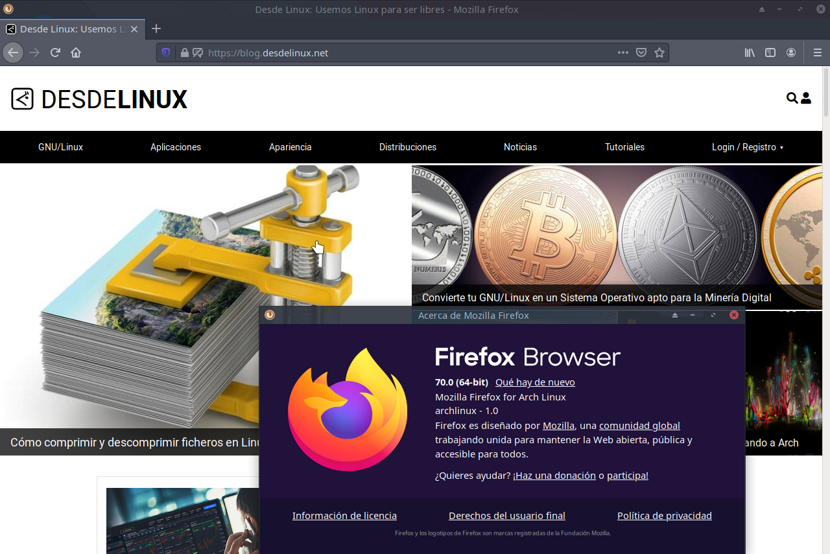
The day of ayer the release of the new version was announced from the popular web browser Firefox 70, as well as the mobile version of Firefox 68.2 for the Android platform. Additionally, an update to the long-term support version of 68.2.0 has been released.
This new version of the browser arrives with some news, of which stands out advanced protection against user tracking, which also includes the blocking of social network widgets that track the movement of users on third-party sites (for example, the Facebook Like button and the insertion of Twitter messages).
For forms of authentication through an account on social networks, it is possible to temporarily deactivate the block, in addition to adding a summary report on completed blocks in which you can track the number of blocks per day of the week and type.
Also within the main changes of Fiefox 70 is the new Firefox icon which shows the new image already displayed. We also have the extended dark mode to all internal pages of the browser, even to the configuration pages.
Another change that we can find is that Lockwise offers a new interface "About: logins" to manage saved passwords. The plugin displays a button on the panel through which you can quickly view the accounts saved for the current site, as well as perform search operations and password editing.
Saved passwords can be accessed through a separate Lockwise mobile app, which supports auto-fill passwords in any mobile app authentication forms. The password generator is activated by default, when completing registration forms.
The system complement Firefox Monitor is integrated, which provides a warning in the event of account compromise or an attempt to enter a previously hacked site.
In the address bar instead of the button «(i)», there is a privacy level indicator which allows to see if the tracking blocking modes have been activated on the visited website. The indicator turns gray when the lock mode for motion tracking is enabled in the settings and there are no fixed items on the page to lock.
The indicator turns blue when certain elements are locked on the page that violate privacy or are used to track movements. The flag is crossed out when the user has disabled tracking protection for the current site.
All the Pages opened via HTTP or FTP are marked with an insecure connection icon, which is also displayed for HTTPS in case of certificate issues. The color of the lock symbol for HTTPS has been changed from green to gray. In the address bar, the name of the certificate was no longer displayed, this because the information displayed could mislead the user and be used for identity theft.
For the special case of Linux include the WebRender composition system by default for AMD, Intel and NVIDIA GPUs (Nouveau driver only) when using Mesa 18.2 or later.
While for Windows, in addition to previously supported AMD and NVIDIA GPUs, WebRender is now enabled for Intel GPUs. The WebRender composition system is written in Rust and takes the rendering operations of the page content aside from the GPU.
When using WebRender instead of the composition system built into the Gecko engine, which processes data using the CPU, the Gecko engine makes use of the GPU to perform the rendering operations of the page elements, thus achieving a significant increase in rendering. rendering speed and reduce the load on the CPU.
To force WebRender to be included in about:config, you can change the settings from «gfx.webrender.all" Y "gfx.webrender.enabled«.
How to install Firefox 70 on Linux?
To install this new version of the browser, we only have to count the support for Snap packages and in a terminal we are going to type the following command:
sudo snap install firefox